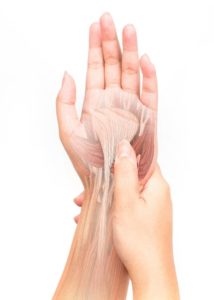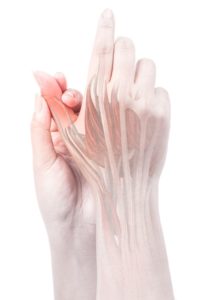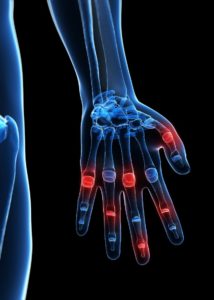Trigger Finger: What Is It and How Do We Treat It?
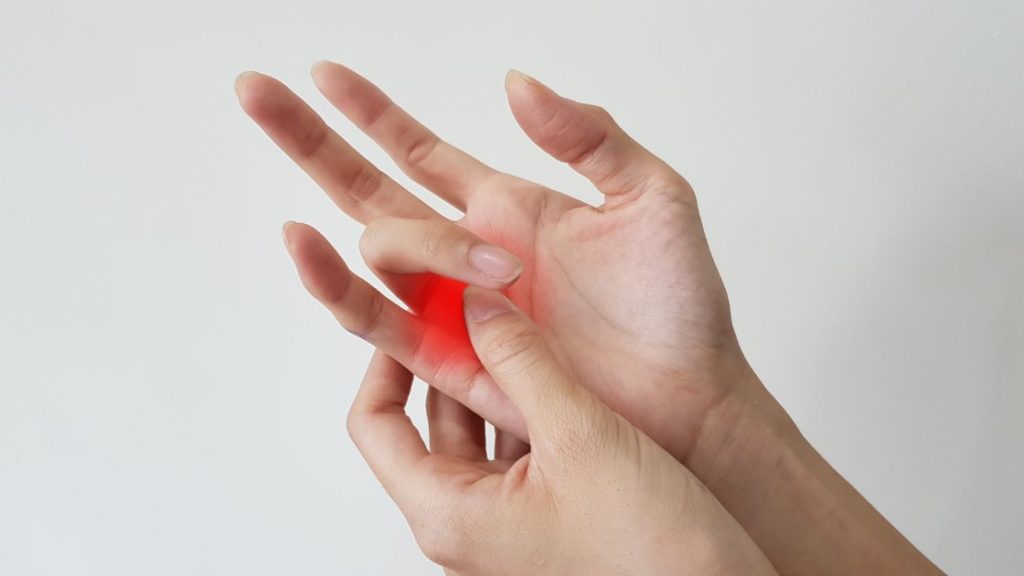
Stenosing tenosynovitis, also known as trigger finger, is a very common condition characterized by a finger (or more than one finger) locked in a bent position. It gets its more commonly used name not just from the appearance, which often presents like a finger pressed to a gun’s trigger, but also from the “snap” or “pop” noise the digit may sound when bent or straightened.
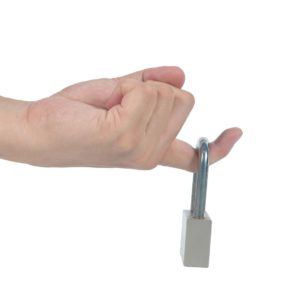 What are the symptoms of trigger finger? Who is at highest risk for developing the condition? Which joints and muscles misaligned and how do we put them back in place?
What are the symptoms of trigger finger? Who is at highest risk for developing the condition? Which joints and muscles misaligned and how do we put them back in place?
Symptoms
- Stiff finger(s)
-
- Finger joints might be stiffest in the morning
-
- Inability to voluntarily straighten finger
-
- May sporadically pop straight involuntarily
-
- Clicking noise when moving finger
- Tenderness at the base of the impacted digit or on the palm
- Bump(s) or swelling near affected area(s)
Risk Factors
The most common cause of trigger finger is repetitive and/or forceful movement of the fingers and thumbs. Individuals with jobs or hobbies requiring repeated “gripping” actions are at the top of the list, but there are other factors that also increase one’s risk:
- Work related activities
-
- Farmers, construction workers, musicians, typists, cashiers, etc.
-
- Age
-
- Onset tends to occur between ages 40-60
-
- Gender
-
- More commonly seen in women
-
- Underlying health conditions
-
- Diabetes, rheumatoid arthritis, and gout increase susceptibility
-
- Surgery complications
-
- Trigger finger can be a side effect following carpal tunnel surgery
-
Which Structures are Out of Alignment?
During muscle contraction, your agonist muscles provide force to execute an action, and your antagonist muscles do the opposite by relaxing in response. Holding a sustained muscle contraction causes muscle to become facilitated, which means that it’s “always activated”. The body, always adapting to the situation at hand, will inhibit the antagonistic muscle, essentially “turning it off”.
A facilitated muscle is tight and shortened, requiring lengthening. An inhibited muscle is long and weak, needing strengthening. With a trigger finger, which muscles are tightening and which ones are weakening? Also, which joints are misaligned as a result?
Tight Short Muscles (Agonists) 
The muscles responsible for finger flexion:
- Flexor digitorum profundus
- Flexor digitorum superficialis
The muscles responsible for thumb flexion:
- Flexor pollicis brevis
- Flexor pollicis longus
Long Weak Muscles (Antagonists) 
The muscles responsible for finger extension:
- Extensor digitorum
- Extensor indicis
- Extensor digiti minimi
The muscles responsible for thumb extension:
- Extensor pollicis brevis
- Extensor pollicis longus
Affected Joints 
Joints responsible for finger movements:
- Metacarpophalangeal joint (MCP)
-
-
-
-
- Joint at the base of the finger
-
-
-
-
- Proximal interphalangeal joint (PIP)
-
-
-
-
- Joint in the middle of the finger
-
-
-
-
- Distal interphalangeal joint (DIP)
-
-
-
-
- Joint of the fingertip
-
-
-
-
Our Four-Step Approach to Treatment
The goals of trigger finger treatment are as follows:
1. Remove Knots From Muscular Tissue
- The long-weak muscles listed above will be massaged to loosen the muscular adhesions. The massage therapist will begin the glides at the patient’s fingertip(s), then guide the strokes towards the palm and over the entire forearm, ending the glide at the elbow.
2. Lengthen The Short and Tight Facilitated Muscles
- After the knots in the tendons of the fingers and muscles of the hand/forearm have been released, the structures will respond well to lengthening exercises. This goal is achieved through a “pin and stretch” technique. The therapist will pin down a flexor tendon at the fingertip and direct a glide towards the base of the palm, all while the patient actively flexes and extends the fingers.
- Once the flexor tendons are lengthened, the therapist will repeat the technique on the forearm muscles. This time the therapist will pin the patient’s flexor muscles at the wrist and glide towards the elbow as the patient flexes/extends the wrist.
3. Strengthen The Long and Weak Inhibited Muscles
- Proprioceptive neuromuscular facilitation (PNF) can then be applied to extensor muscles listed above. The therapist will push the patient’s digits to full range of motion and the patient will push the fingers against the resistance. The exercise both strengthens muscles and improves joint range of motion.
4. Mobilize The Stiff Joints
- Following the resistance exercises, the therapist will passively move the patient’s finger and hand joints. The modality may end with traction vibration, which involves pulling and shaking on the fingers and hands, to straighten out the joints.
Now You Know!
Without treatment, trigger finger can worsen over time and possibly require surgery for correction. If you act quickly though, the condition is more likely to reverse on its own without invasive measures.
Book an appointment with one of our talented bodywork practitioners today! Your first consultation is free!

Katrina Jenkins
Author, Licensed Massage Therapist
Katrina Jenkins graduated from Towson University in 2013 with a Bachelor’s Degree in Health Science and worked as a nurse’s aide briefly before pursuing her true passion. She graduated from the Massage Therapy Institute of Colorado in April 2016 with honors and completed the Touch of Healers Scholarship Program the following summer. She has been a part of the Moyer Total Wellness Team since the summer of 2017.
Resources
Leversedge, MD, F.J. and Rohde, MD, R. (2010). Trigger Finger – Trigger Thumb – OrthoInfo – AAOS. [online] Aaos.org. Available at: https://orthoinfo.aaos.org/en/diseases–conditions/trigger-finger/.
Mayo Clinic Staff (2020). Trigger finger – Symptoms and causes. [online] Mayo Clinic. Available at: https://www.mayoclinic.org/diseases-conditions/trigger-finger/symptoms-causes/syc-20365100#:~:text=Trigger%20finger%20is%20a%20condition.
Pencle, F.J., Waheed, A. and Molnar, J.A. (2019). Trigger Thumb. [online] Nih.gov. Available at: https://www.ncbi.nlm.nih.gov/books/NBK441854/.
Wheeler, T. (2022). Trigger Finger. [online] WebMD. Available at: https://www.webmd.com/rheumatoid-arthritis/trigger-finger#:~:text=Most%20of%20the%20time%2C%20it.
www.arthritis.org. (n.d.). Hand and Wrist Anatomy | Arthritis Foundation. [online] Available at: https://www.arthritis.org/health-wellness/about-arthritis/where-it-hurts/hand-and-wrist-anatomy.
Photo Credit
Canva by sittithat tangwitthayaphum
Canva by novaart
Canva by horillaz
Canva by horillaz
Canva by Eraxion

